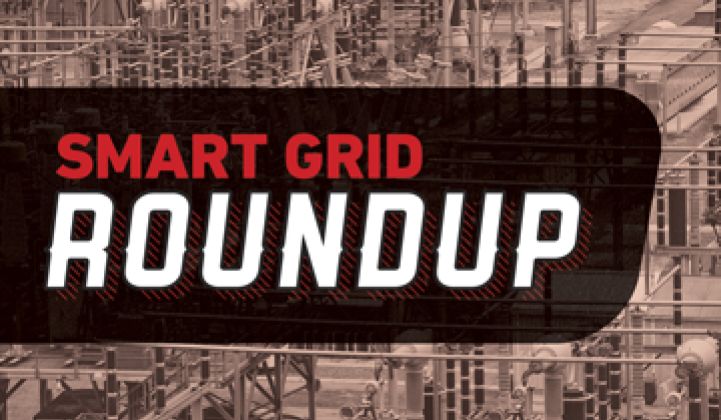A lot of smart grid news has come out of Asia this week:
- First off, China. On Tuesday, Honeywell announced the first project for a U.S.-Chinese government smart grid partnership aimed at bringing faster demand response technologies to market.
The north China city of Tianjin is the target, and the goal is to cut energy use in office buildings, government centers, factories and industrial facilities to prevent blackouts or forced outages when grid power demand is at its peak.
It was almost a year ago when Honeywell first announced it would work with State Grid Corp. of China on demand response, which gives a sense of how slowly a bilateral government research effort can take to develop. Jeremy Eaton, VP of Honeywell Energy Solutions, wouldn’t say when the newly announced project was expected to be complete, how much it might cost or how much power it would harness, though Honeywell’s system is designed to drop megawatts within minutes.
It could be big. Honeywell’s agreement is with the Tianjin Economic-Technological Development Area (TEDA), one of China’s mega-growth industrial/technology zones, and the city itself has about 11.5 million inhabitants, which means there’s a lot of power to shed.
Indeed, China has struggled with peak power demands for decades, and the country’s rapid economic growth has only multiplied the problem, Eaton said. At the same time, China’s massive wind power farms in its Western desert regions will be delivering gigawatts of intermittent electricity to grids that weren’t built to handle it, stressing the system all the way down to the level of individual users.
But all of China’s demand response is manual today -- and much of it is done via government decree. I visited Chongqing in 1992, where some apartment buildings only got electricity every other day during the smog-choked summer afternoons when peak demand was at its highest. Today, State Grid imposes curtailment quotas on residential, commercial and industrial users on a regular basis, Eaton said -- a reflection of the Chinese government’s power over private enterprise.
Honeywell’s technology is based around OpenADR, a standard for automating utility-customer communications and the way they talk to building management systems (BMS) that control power use. Akuacom, which Honeywell bought in 2010, makes the servers that translate the utility’s digital commands into orders that BMSs can react to in a predictable way to do everything from idling HVAC systems and lighting banks to ordering factory lines to shut down for awhile.
Getting response times down to minutes, or even seconds, gives demand response much better flexibility to manage intermittent wind and solar power, rather than just reacting to requests sent hours or days in advance, Eaton noted. It’s also cheaper and more predictable -- although in the United States at least, the customer has a final say on whether or not to comply with power-down orders.
Honeywell has deployed about 80 megawatts of OpenADR load for Southern California Edison, and recently launched a project in the U.K., so “the technology works,” Eaton said. But equally as important will be how China decides to mix mandates with the utility incentives, subsidies or even power price-based markets needed to get private property owners to sign up, and a big part of the project involves testing out those incentive and business models, he added.
China’s latest five-year economic plan calls for spending RMB 1.5 trillion on its energy infrastructure by 2015. While the lion’s share of that is going toward the massive transmission lines needed to bridge western wind with eastern cities, the government also has energy efficiency decrees that could be served by adding energy efficiency installations on top of demand response, Eaton said.
- India, the world’s second most populous country after China, is even worse off when it comes to its power grid. Much of the country lacks power at all, and the towns and cities that do have it face frequent blackouts and power quality issues.
Seems like a good place to modernize, and India’s government is getting the ball rolling with plans to direct about 5 billion rupees (nearly $100 million) toward approximately eight smart grid pilot projects, for 500 million to 600 million rupees ($10 million to $11.5 million) apiece, according to Monday news reports.
That’s not much money, compared to the roughly $4 billion in stimulus money that U.S. smart grid projects received over the past two years. But it’s certainly needed, not only to tackle the country’s existing grid problems but also to integrate the wind and solar power that the government has mandated over the coming years.
Demand management and “reduction of aggregate technical and commercial losses” -- i.e., better efficiency and less energy theft -- were also on the list of goals for the projects. ZPryme projects the Indian smart grid market could reach $1.9 billion by 2015, giving a sense of how far the country has to go to upgrade the grid it has before it takes the next steps.
- Finally, there has been some activity in Vietnam, where San Jose-based Echelon recently announced a second big Asian project to network streetlights in the city of Hanoi. Echelon is a streetlight networking leader in the U.S. and Europe, and launched its first streetlight projects in China in early 2011.
Echelon hasn’t gotten its smart meters into Asia yet. The company's devices are popular in Europe but have been used in only one small-scale U.S. deployment with Duke Energy. Echelon is working with Chinese smart meter maker Holley Metering on technology for the Chinese smart grid market.



